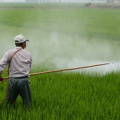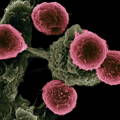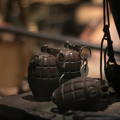Présentation de l'étude
L'Agence de sécurité sanitaire (Anses) a mené des tests entre octobre 2020 et décembre 2022 pour détecter la présence de résidus de pesticides, d'explosifs et d'un solvant industriel dans l'eau potable de 300 sites en France.
Ces polluants n'avaient jamais été mesurés auparavant dans les analyses de l'eau.
Cette page est un résumé de l'article détaillé de franceinfo : A consulter ici !
Les découvertes réalisées

1 / 3
Chlorotalonil
Un résidu de ce pesticide, interdit en Europe depuis 2019, a été trouvé massivement dans l'eau du robinet. Il est présent dans un tiers des sites testés.

1µg/L
1,4 dioxane
Un solvant industriel classé comme potentiellement cancérigène. Bien que la France n'ait pas de seuil sanitaire pour ce produit, plusieurs échantillons ont dépassé le seuil de 1 µg/L, fixé par l'État de New York (c'est à dire que les robinets sont arrêtés si > 1 µg/L), mais tous restent inférieurs au seuil de l'OMS de 50 µg/L.

10%
Explosifs de la Première guerre mondiale
Des traces d'explosifs datant de cette période ont été trouvées dans l'eau y compris loin des champs de bataille. Deux autres explosifs, le RDX et le HMX, ont également été détectés. Au total 10% des échantillons sont concernés.
La France n'a pas de seuil sanitaire pour ces substances.

28
Pesticides
Le triste record est de 28 pesticides, découverts dans l'eau du robinet à Choye en Haute-Saône dont 13 avec une concentration supérieure à 100 ng/L. Certains sont des métabolites (transformés chimiques de pesticides) dont la toxicité n'est pas toujours bien connue.
Aucun des 300 échantillons n'a dépassé le seuil sanitaire fixé en urgence par les autorités.
Les résultats
Suite à ces analyses et découvertes, plusieurs zones de captage d'eau potable ont dû être fermées.
De nombreux sites doivent réaliser des travaux sur leurs captages, travaux imposés lorsque le seuil de 100 ng/L (ou 0,1 µg/L) est dépassé pour certains métabolites de pesticides.
Ces résultats soulignent la nécessité d'une surveillance accrue de l'eau potable.
Les points d'analyses en noir sont ceux qui ont soit :
- Une concentration de 1,4 dioxane >= 1 µg/l (arrêt des robinets dans l'état de New York) ;
- Au moins un pesticide à plus de 100 ng/l (ce qui impose des travaux dans les zones de captage) ;
Les analyses d'ÖKO EUROPE en Belgique
ÖKO EUROPE a financé une analyse sur l'eau du robinet à Limal début juillet 2023 et les résultats sont analogues et détaillés dans l'article présent ici.
Afin de pouvoir comparer les résultats, il faut bien avoir en tête que 100 ng/L correspond à 0,1 µg/L.
 Contact us
Contact us
 Livraison OFFERTE* dès 75 €
Livraison OFFERTE* dès 75 €
 Delivery in 2 to 5 days
Delivery in 2 to 5 days
 Secure payment
Secure payment
 Official distributor
Official distributor
